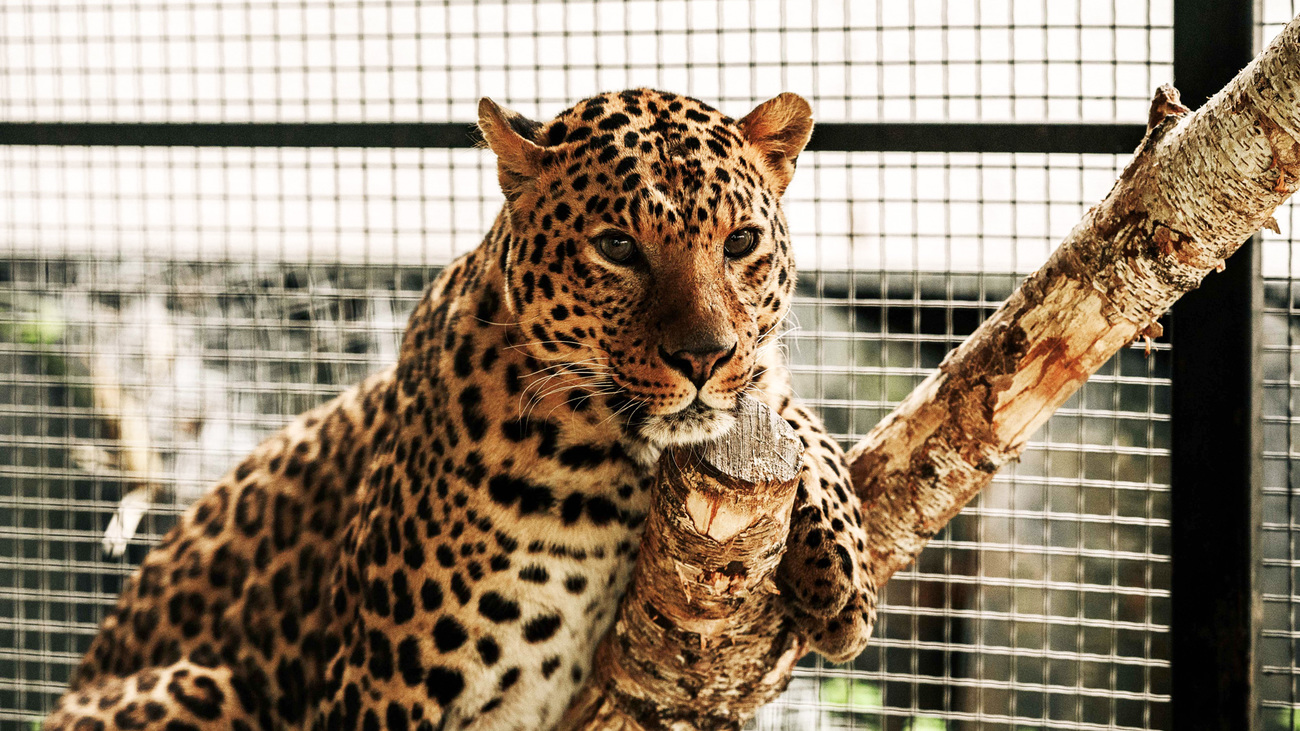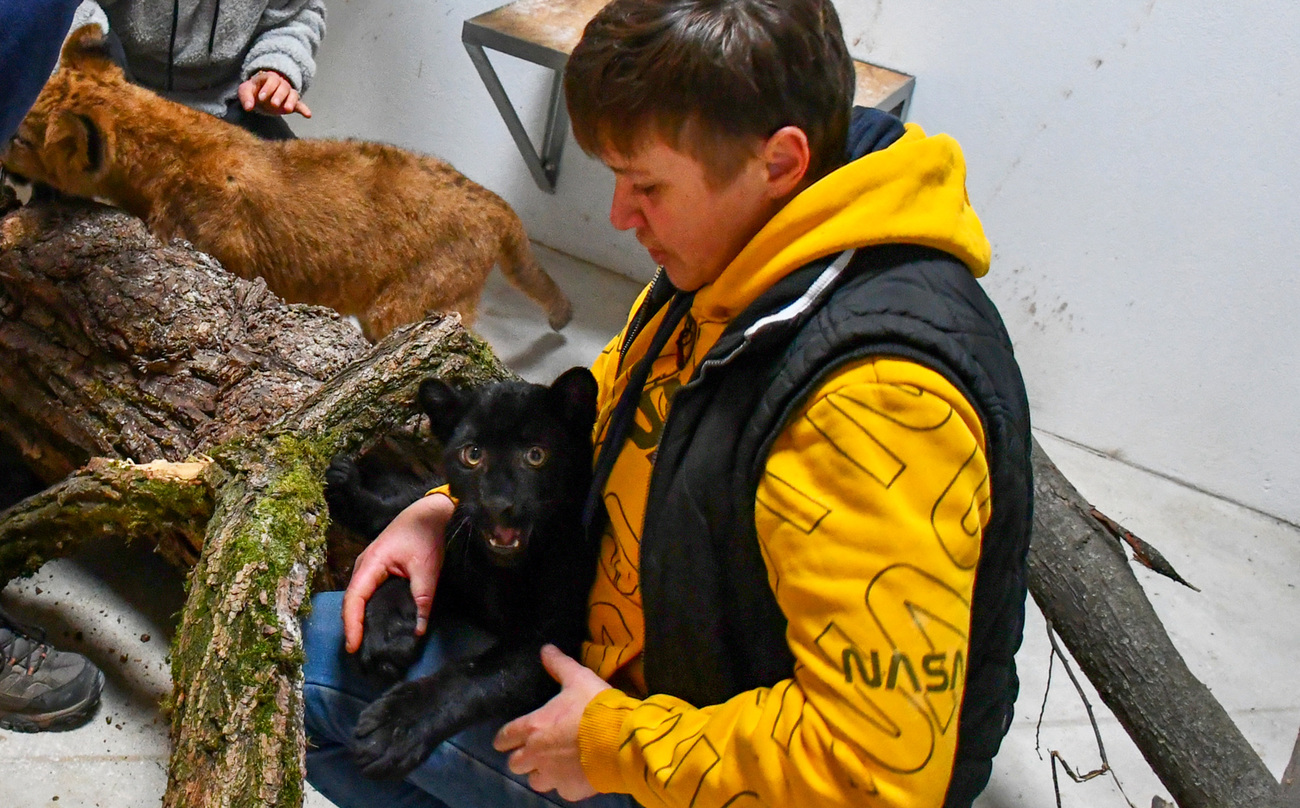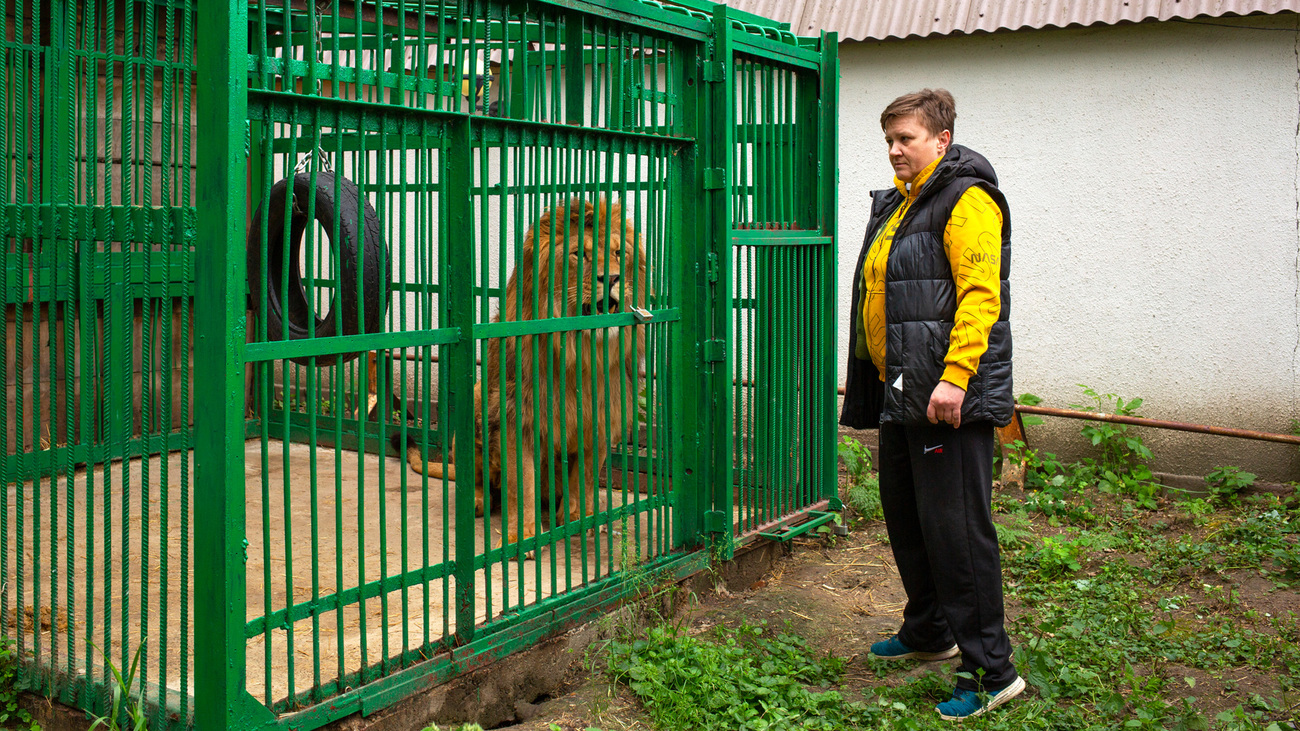Rescuing animals during disasters – Europe
save human lives by saving animals before, during and after disastersCaring for big cats in the midst of war
Caring for big cats in the midst of war
Written by Natalia Popova, manager of Wild Animal Rescue.
Every morning, I bring the cats their breakfast—seven to nine kilograms of meat each. Lions, tigers, and leopards aren’t domesticated cats—but like their domesticated cousins, they need fresh water, clean enclosures, and enrichment. They’re the most demanding guests at Wild Animal Rescue, the centre I operate in Kyiv, which provides temporary homes for wild animals who have been rescued from captivity or suffered an injury.

A typical day begins with a regular health check, a refill of their water, and, of course, their hearty meal, which needs to be defrosted ahead of time. These carnivores never fail to let us know when they’re hungry. Just as a housecat will begin meowing and pacing at mealtime, so will their wild counterparts.
While the size of their temporary enclosures makes it difficult to provide diverse enrichment activities—there aren’t many places to hide food or place a cardboard box—we’ve gotten creative. For example, we hang tires from the ceiling or place them on the floor (the lions love to roll them around), provide larger pieces of meat like full legs of cattle, and even give them pumpkins. Two big cats, Luladja and Queen, loved to roll the pumpkins all over their enclosures for days until they were smashed to pieces.
The local veterinarian visits often, as the centre receives new patients every few days—a roe deer struck by a car, for instance, or a badger bitten by dogs, or a swan with a wounded wing, among others—so the big cats receive frequent medical check-ups. I also visit the cats up to ten times a day, and if any show visual anomalies, the veterinarian comes in the next day for a full health check.
Most of the big cats arrive at the centre in a state of high stress and with body weight below normal, though in some cases it’s the opposite and they are severely overweight. In about six months, a calming environment and proper feeding can bring them back to a healthy weight.
Challenges for animals in the face of human conflict

In an area that has grown accustomed to experiencing drone and missile attacks, animals struggle to cope with loud noises, explosions, and stress.
Throughout December, we’ve heard air attack alarms every one to two days. The blaring noise is often paired with the sound of explosions in the air. Whether it happens at 4 a.m. or 2 p.m., I run to check video surveillance cameras to see if any of the big cats are in distress. When the sounds are closer than usual, I run to the enclosures to see them face-to-face.
On 16 November 2023, a missile struck about 1,000 metres from the centre’s fence. One of the tigers, Tygriulia, experienced such a shock that she threw herself against the enclosure wall. She couldn’t stay on her feet for a few days afterwards and had heavy bruises. This situation required intensive veterinary care.
Due to the ongoing warfare, most of the big cats suffered from contusions and digestive problems prior to arriving at the center—the results of nearby explosions and eating spoiled food due to lack of feed supply. Many had been left behind by their owners.
The future for captive big cats

Ultimately, my goal is to rehome these big cats to someplace safer. The biggest challenge is finding that place. There are no specialized big cat sanctuaries in Ukraine—so we look elsewhere in Europe. But these facilities in Europe are overloaded with animals rescued from circuses and illegal trade seizures.
Sadly, in Ukraine, there is rampant, unregulated breeding of big cats for private owners and the exotic pet trade, which only exacerbates the issue of overfilled shelters. Experts estimate there are still dozens more lions in private homes within the country, and many continue to be abandoned or surrendered as the conflict forces evacuations.
These cats can’t be released back to the wild, as they were raised to be dependent on humans for their daily care—many since they were only a few weeks old. As cats learn the skills necessary to survive in the wild from their mothers, it’s near impossible to ensure they will be able to live outside of captivity.
Fortunately, some have found their forever homes—four lion cubs previously in our care recently moved to live with our friends at The Wildcat Sanctuary in Minnesota, US. There, they will live together in a habitat designed specifically for their species.
Brave, an African leopard, has been transported to AAP (Animal Advocacy & Protection), a specialized rescue center in Spain, where he will stay until the team finds him a more permanent home.
Other success stories include Kiara, a black leopard cub rescued from the exotic pet trade and brought to a rescue center in France, Tonga Terre d’Accueil. Another group of lions, evacuated from Ukraine to Poznań Zoo in Poland in June 2023, will soon be transported to the UK.
Once I have found new homes for all the big cats currently at Wild Animal Rescue, I hope to go back to concentrating on the rescue and rehabilitation of Ukraine’s native wildlife.
Related content
every problem has a solution, every solution needs support.
The problems we face are urgent, complicated, and resistant to change. Real solutions demand creativity, hard work, and involvement from people like you.